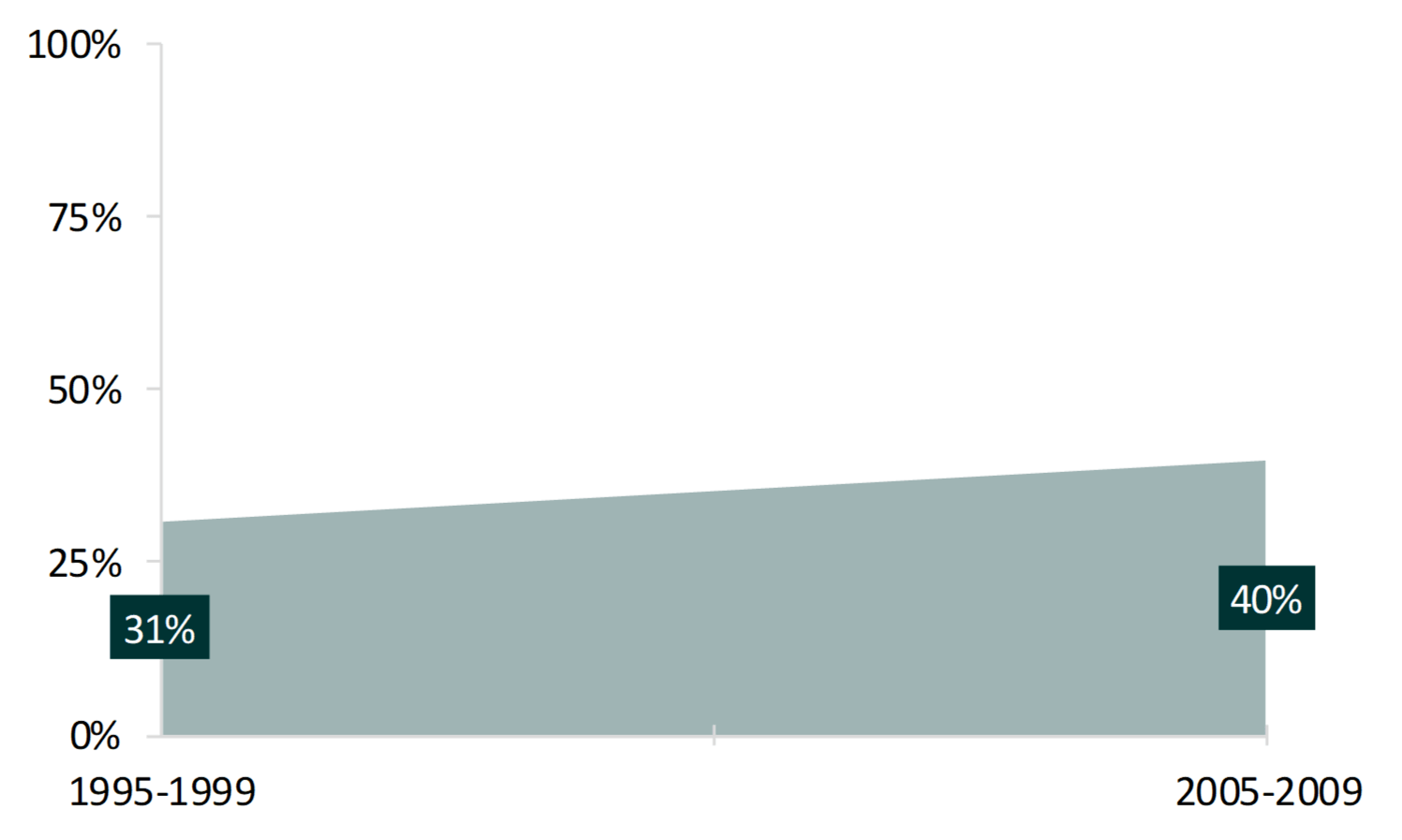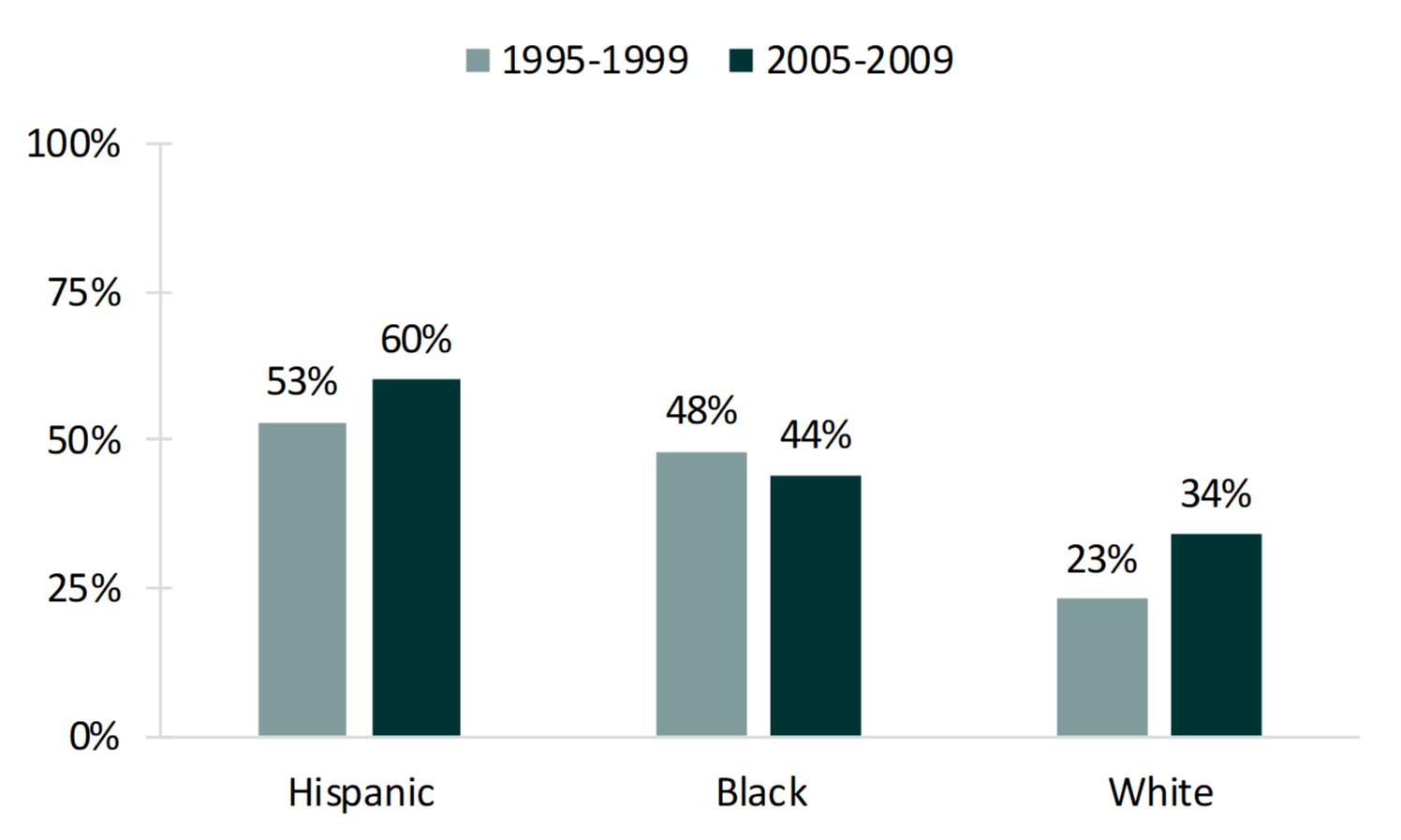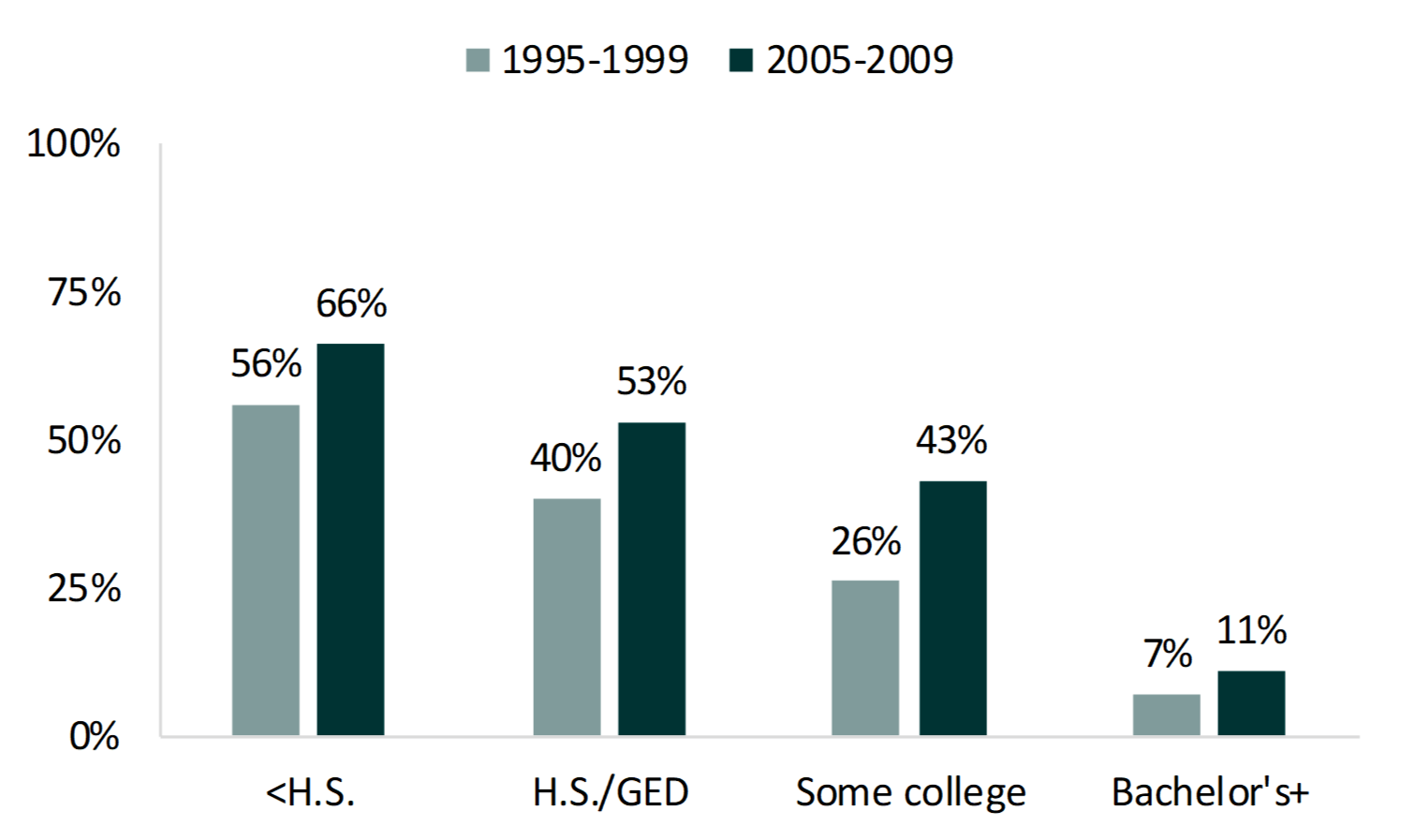Cohabitors Raising Shared Children
Family Profile No. 01, 2019
Author: Kasey J. Eickmeyer
Cohabitation continues to increase in the United States and is viewed as an acceptable family form in which to have children. The majority (64%) of women aged 19-44 have ever cohabited (FP-17-02), and virtually all the increase in nonmarital childbearing is due to childbearing in cohabiting unions (FP-17-04). Using data from the 2002 and 2011-2015 National Survey of Family Growth, this Family Profile charts the growth in cohabiting women living with their partner and their shared biological children. We examine two cohabitation cohorts a decade apart--women who cohabited from 1995 to 1999 and 2005 to 2009. We focus on cohabiting families with at least one shared biological child, recognizing these families may also have stepchildren (children of either partner born in a prior union), and address variation in cohabiting families in FP-19-02.
Figure 1. Cohabitors With Shared Biological Children
Race & Ethnicity
- The majority of Hispanic cohabiting couples were raising a biological child together in contrast to 44% of Black and 34% of White cohabitors.
- Growing shares of White and Hispanic cohabiting couples were raising a shared biological child.
- Among White cohabitors in 1995-1999, about one-quarter were living with biological children, and by 2005-2009, over one-third (34%) were living with biological children.
- Among Hispanics, there was a shift from about 50% in 1995-99 to 60% by 2005-2009.
- Slightly declining shares of Black cohabiting couples were raising biological children together.
Figure 2. Cohabitors With Shared Biological Children by Mother’s Race/Ethnicity
Educational Attainment
- A negative education gradient persists in the proportion of cohabitors living with a shared biological child.
- Nearly two-thirds (66%) of cohabitors without a high school degree were raising a biological child together in contrast to about 1 in 10 (11%) cohabitors with a college degree.
- Increases in the share of cohabitors raising a biological child occurred across education groups.
- The greatest increase occurred for women with ‘some college’ shifting from 26% in the early cohabitation cohort to 43% for the recent cohabitation cohort.
Figure 3. Cohabitors With Shared Biological Children by Mother’s Education
Data Citations
- National Center for Health Statistics (NCHS). (2004). Cycle 6: 2002 National Survey of Family Growth Public Use Data and Documentation. Hyattsville, MD: CDC National Center for Health Statistics. Retrieved from https://www.cdc.gov/nchs/nsfg/nsfg_cycle6.htm
- National Center for Health Statistics (NCHS). (2014). 2011-2013 National Survey of Family Growth Public Use Data and Documentation. Hyattsville, MD: CDC National Center for Health Statistics. Retrieved from https://www.cdc.gov/nchs/nsfg/nsfg_2011_2013_puf.htm
- National Center for Health Statistics (NCHS). (2016). 2013-2015 National Survey of Family Growth Public Use Data and Documentation. Hyattsville, MD: CDC National Center for Health Statistics. Retrieved from http://www.cdc.gov/nchs/nsfg/nsfg_2013_2015_puf.htm
References
- Hemez, P. & Manning, W.D. (2017). Over twenty-five years of change in cohabitation experience in the U.S., 1987-2013. Family Profiles, FP-17-02. Bowling Green, OH. National Center for Family & Marriage Research. https://www.bgsu.edu/ncfmr/resources/data/family-profiles/hemez-manning-25-years-change-cohabitation-fp-17-02.html
- Wu, H. (2017). Trends in births to single and cohabiting mothers, 1980-2014. Family Profiles, FP-17-04. Bowling Green, OH. National Center for Family & Marriage Research. https://www.bgsu.edu/ncfmr/resources/data/family-profiles/wu-trends-births-single-cohabiting-mothers-fp-17-04.html
Suggested Citation
- Eickmeyer, K. J. (2019). Cohabitors raising shared children. Family Profiles, FP-19-01. Bowling Green, OH: National Center for Family & Marriage Research. https://doi.org/10.25035/ncfmr/fp-19-01
This project is supported with assistance from Bowling Green State University. From 2007 to 2013, support was also provided by the U.S. Department of Health and Human Services, Office of the Assistant Secretary for Planning and Evaluation. The opinions and conclusions expressed herein are solely those of the author(s) and should not be construed as representing the opinions or policy of any agency of the state or federal government.
Updated: 06/16/2022 10:55AM






